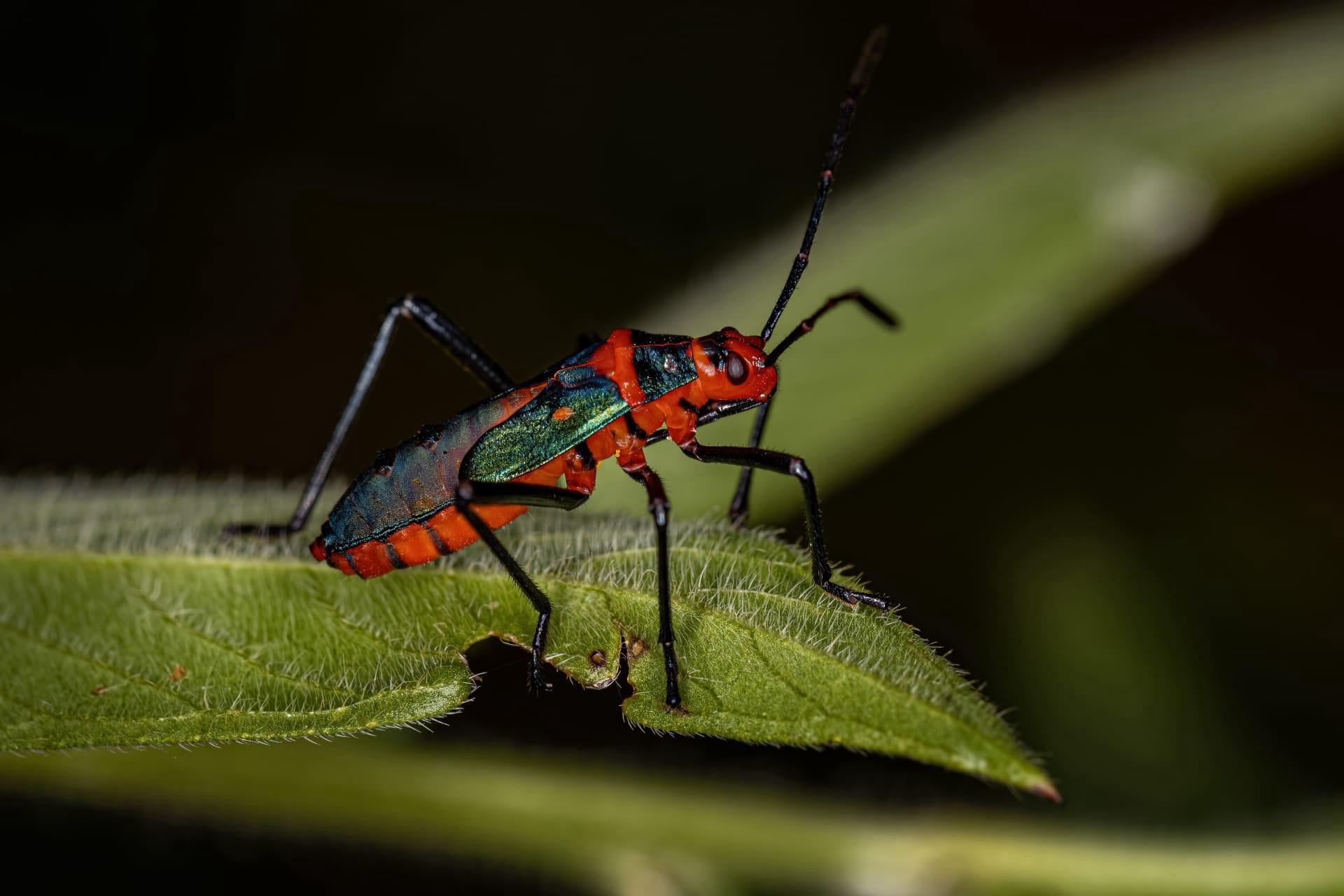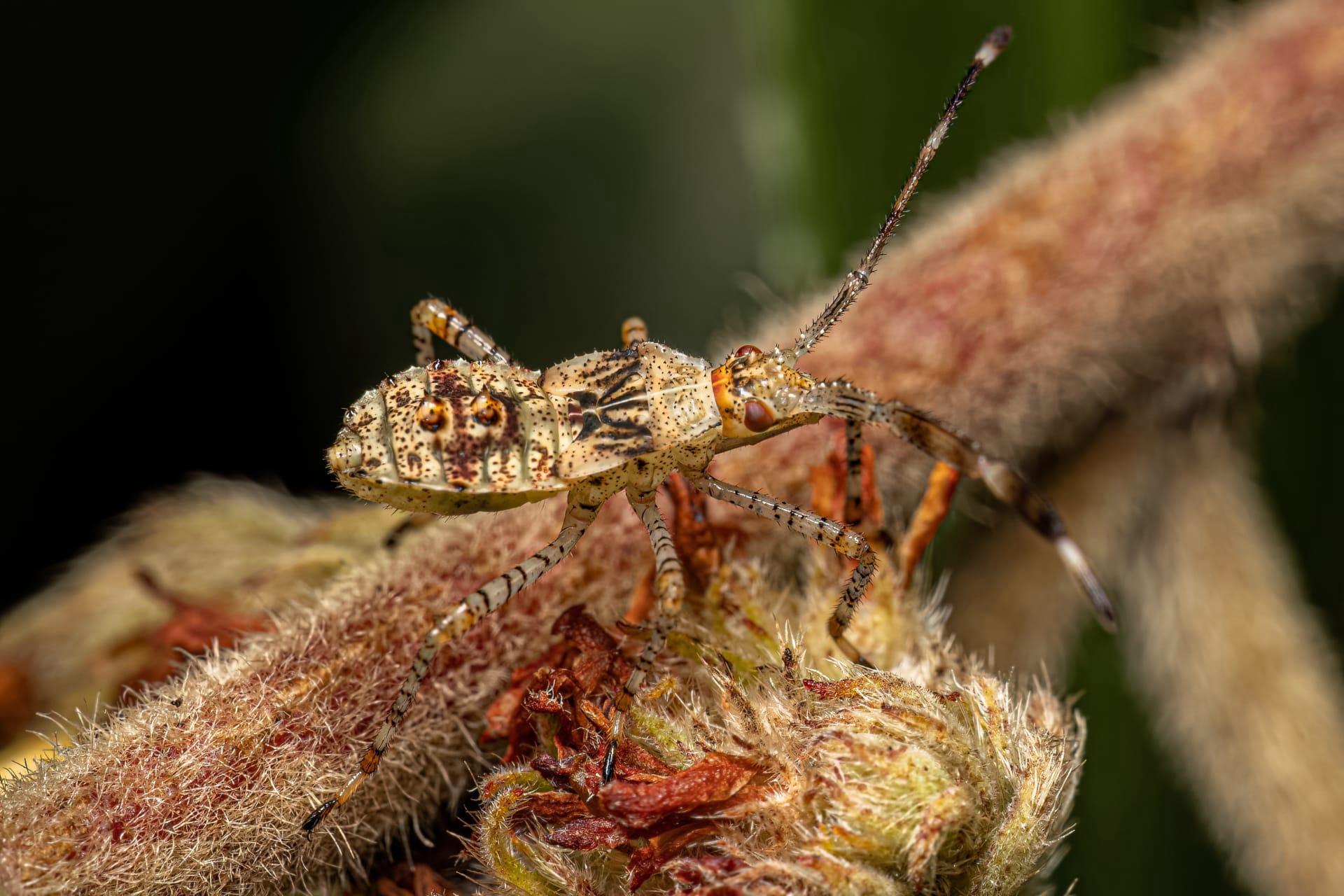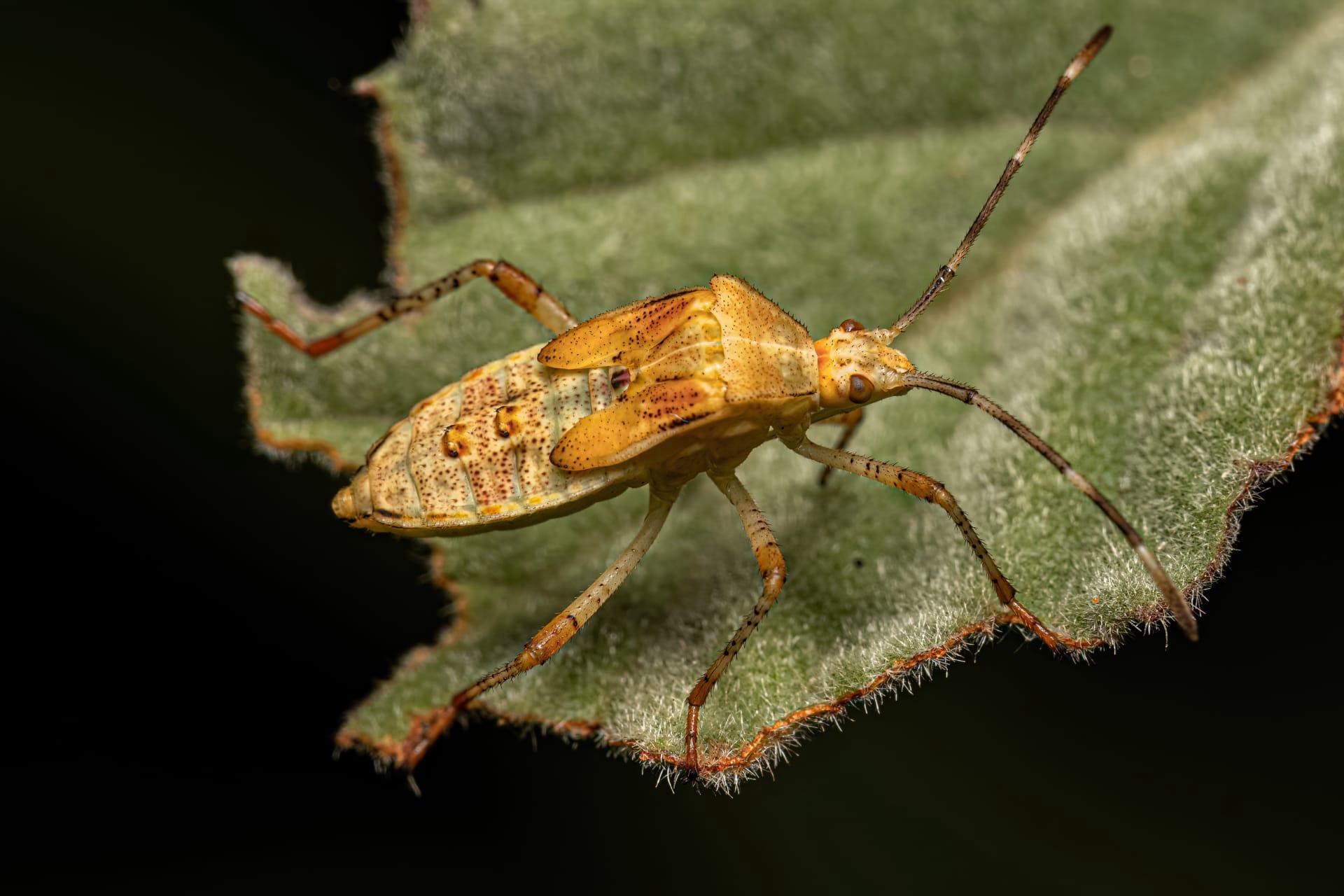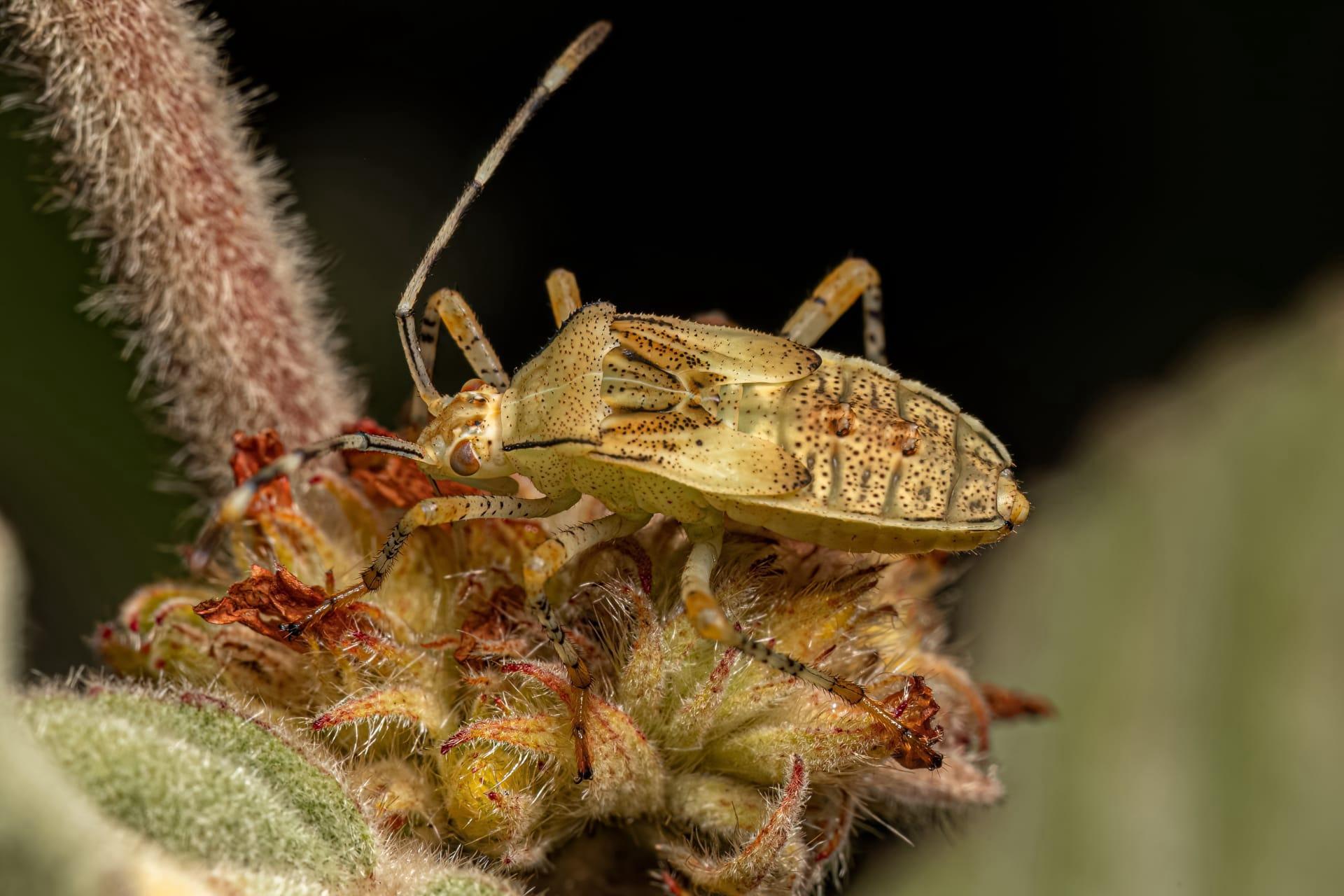Leaf Footed Bug Characteristics
- Home /
- Mini Encyclopedia /
- Animal /
- Leaf Footed Bug Characteristics
1
Leaf Footed Bugs, scientifically known as the members of the Coreidae family, are intriguing insects. Their body size varies, with most species measuring between 0.75 and 1.25 inches in length. These bugs have a lifespan that typically ranges from a few months to a year, depending on environmental conditions and predation.
One of the most distinctive organs of the Leaf Footed Bug is its leaf-like expansions on the legs, especially on the hind legs. This unique adaptation not only provides excellent camouflage among leaves and branches but also plays a role in communication during mating rituals. These leaf-like structures are visually striking and vary in size and shape across different species.

2
Question: "What do Leaf Footed Bugs feed on and how does this impact the environment?"
Answer: Leaf Footed Bugs are primarily herbivorous, feeding on the sap of a wide range of plants, including fruits, nuts, and ornamental vegetation. Their feeding habits can cause significant damage to agricultural crops and gardens. They use their piercing mouthparts to extract sap, which can lead to the wilting and death of the plant tissue. In agricultural settings, their feeding not only reduces yield but also opens pathways for disease to enter the plants.

3
Leaf Footed Bugs exhibit fascinating locomotive characteristics. They are proficient walkers, often seen moving slowly and deliberately on plants. Their movement is typically in search of food or mates. They are also capable fliers, though they prefer walking and only fly when disturbed or traveling long distances.
In terms of feeding, these bugs use their needle-like mouthparts to pierce plant tissues and suck out the sap. This method of feeding allows them to access a wide variety of plant fluids. They are particularly attracted to fruits and seeds, from which they extract nutrients. This feeding style can cause significant damage to plants, as it not only drains them of vital fluids but also makes them susceptible to diseases.

4
The habitat of Leaf Footed Bugs is diverse, ranging from woodlands and forests to gardens and agricultural fields. They thrive in warm, temperate climates and are commonly found in regions where their host plants are abundant. These bugs are adaptable and can be found in various environments, but they prefer areas with plenty of vegetation for feeding and camouflage.
Reproduction in Leaf Footed Bugs involves fascinating behaviors. Females lay eggs on the underside of leaves, typically in a linear pattern. The eggs hatch into nymphs, which undergo several molts before reaching adulthood. During the mating season, males display unique courtship behaviors, often involving the use of their leaf-like leg structures to attract females. These bugs have a relatively fast reproductive cycle, which enables them to produce multiple generations in a single year under favorable conditions.

5
Book: "Insects of the World: Leaf Footed Bugs," authored by Dr. Martin H. Green. Published in the United States in 2010, this book provides an in-depth look at various species of Leaf Footed Bugs globally. It covers their biology, behavior, and ecological significance. The book is rich in photographs and offers a comprehensive overview suitable for both entomology enthusiasts and professionals.
Book: "Garden Invaders: The Coreidae Chronicles," by Sarah E. Thomson, published in the United Kingdom in 2015. This book delves into the impact of Leaf Footed Bugs on gardens and agriculture. Thomson, an experienced entomologist, provides insights into managing these pests and protecting plants. The book combines scientific research with practical advice, making it a valuable resource for gardeners and agriculturalists.